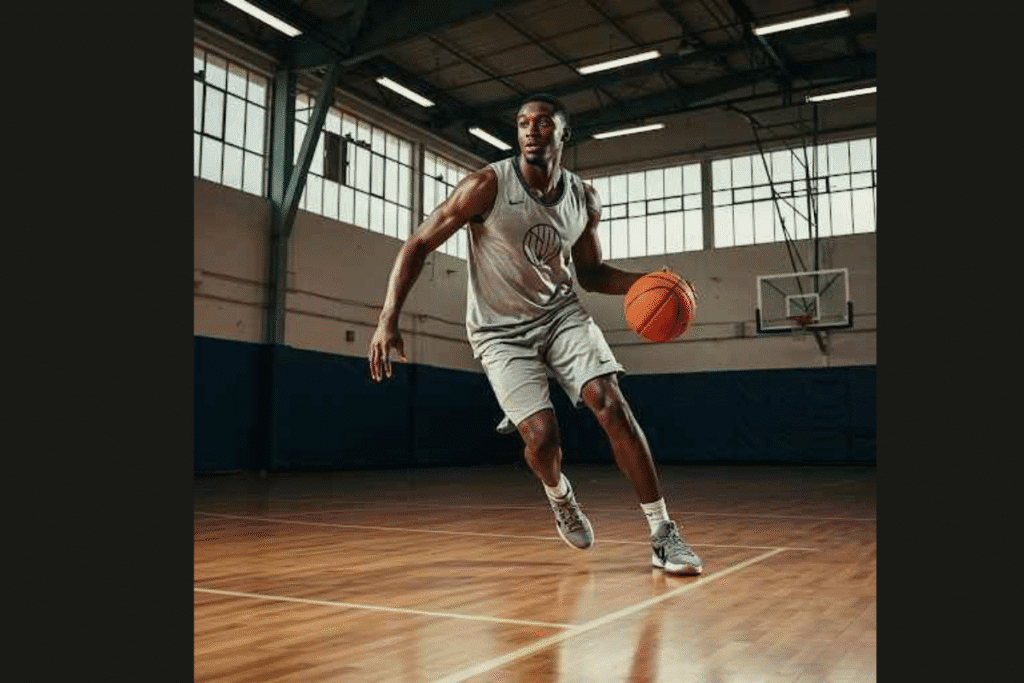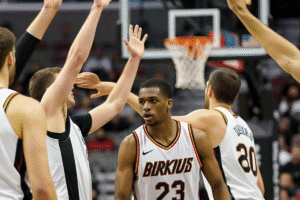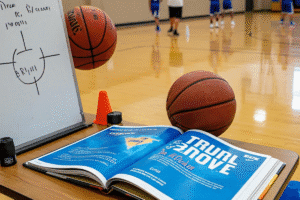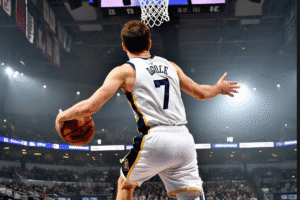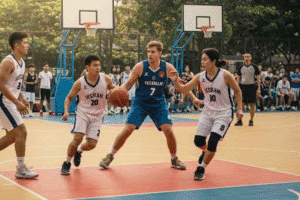Alright, folks, let’s talk about one of the most debated rules in basketball: traveling. Do you know that moment when a player seems to be taking a leisurely stroll with the ball? It’s a call that can make or break a game, and trust me, I’ve seen my fair share of questionable calls. So, let’s break down the rules, clear up some confusion, and maybe even throw in a few lighthearted jabs.
The Basics: What’s the Fuss About?
Simply put, traveling is a violation that occurs when a player moves their feet illegally while holding the ball. If you’re caught traveling, the ball goes to the other team.
Here are the basic situations where traveling can occur:
- Receiving the ball while moving: This is where many players get tripped up.
- Receiving the ball while stationary: Pivoting is key here.
- Starting a dribble: Getting that first step right is crucial.
Fun fact: Back in the 1890s, dribbling didn’t even exist! Players just… stood there. Yale’s team “invented” dribbling in 1897, and the rules had to scramble to catch up. Today’s “two-step” rule? That’s a modern compromise after decades of refs winging it.
The Two-Step Tango: Breaking Down the Rule
Now, let’s get into the nitty-gritty. The core of the traveling rule revolves around the “two-step” concept.
- If you receive the ball while moving, you can take a maximum of two steps before shooting or passing. Simple, right? Well, not always.
- If you already have one foot on the ground when you receive the ball, you only get one extra step.
Heads up: The NBA and FIBA let you sneak in a “gather step” (that sneaky half-step before you officially start counting). Overseas in FIBA games, refs are stricter about it—so if you’re playing in Europe, don’t push your luck!
The Gather Step (or Zero Step):
This is where things get interesting. In the NBA and FIBA, there’s this concept of a “gather step” or “zero step.” Essentially, it’s the step you take before you’ve fully gained control of the ball. This step doesn’t count toward your two steps. It’s like a freebie! This is a big point of confusion and is a big difference between NBA/FIBA rules and many local leagues.
-
- The initial step happens the moment your feet make contact with the floor after catching the ball.
- Control is gained when both hands come onto the basketball or the hand that’s dribbling comes under the basketball.
Pivoting: Your Best Friend (or Worst Enemy)
When you receive the ball while stationary, you can pivot on one foot, called your “pivot foot.”
- The pivot foot can’t move or slide.
- You can lift your pivot foot to shoot or pass, but you must release the ball before your foot touches the ground again.
- It is a myth that you cannot lift your pivot foot. You can, as long as you release the ball before that foot lands again.
Pro tip: Practice “pivot drills” at home. Plant one foot, then swing the other foot in circles like a human compass. Sounds silly, but it’ll save you from awkward shuffles mid-game.
Starting the Dribble: Don’t Jump the Gun!
Starting a dribble seems simple, but it’s another area where traveling can occur.
- You must release the ball before moving your pivot foot.
- If you lift your pivot foot before you dribble, it’s a travel.
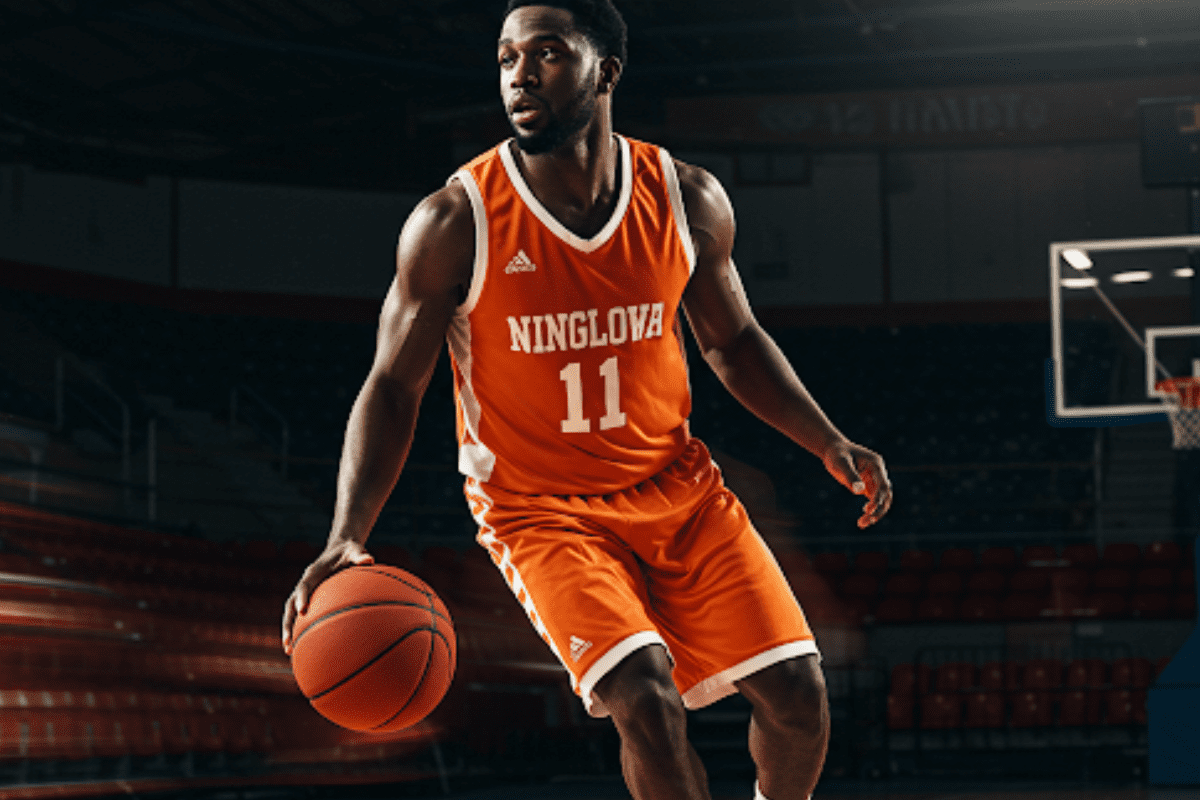
Player with the ball
Kids, listen up: This is where most rookies mess up. Try the “rocket launch” drill: Hold the ball, lift your pivot foot, and immediately pass/shoot. If your foot touches down before the ball’s gone, consider yourself grounded.
Navigating the Gray Areas: League Differences and Pickup Games
Here’s the dirty secret: The NBA lets stars slide with those smooth gather steps. But try that in a high school game? Whistle city. And pickup games? Forget rules—just don’t be the guy arguing over your “zero step” while everyone’s waiting to play.
- NBA and FIBA: They tend to be more lenient with the gather step.
- Youth Leagues and Pickup Games: Often, it’s a simple one-two-step rule. The refs might not be as forgiving with the gather step.
- Ref Feedback: If you’re unsure how the refs in your league call it, ask them! Precuation is better than regret.
- League Rule Book: If your league has a rule book, check it out.
- Pickup Games: Don’t be that person arguing about the rules in a pickup game. It’s just not worth it.
Key Points to Remember:
- A step is basically when a foot hits, not once the foot is already down.
- While dribbling, you can do literally anything you want with your feet, as long as it’s a live, legal dribble.
- The dribble is considered dead when your hand comes under the basketball, both hands come on the basketball, or you palm the basketball.
- Steps don’t count until you have gathered the ball.
Why Does This Rule Exist?
To answer your question about why those steps matter, the traveling rule is there to level the playing field and prevent unfair advantages. Imagine if players could just run with the ball without dribbling. It would be chaos!
But here’s the kicker: Refs miss calls all the time. Even the pros get away with “3-step layups” because the game’s too fast. Don’t hate the ref—hate the game.
Implications of Traveling:
- Turnovers: The most immediate consequence is a turnover.
- Momentum Shifts: A traveling call can disrupt a team’s momentum.
- Strategic Impact: It forces players to be mindful of their footwork and timing.
Conclusion
Quick fixes for sticky feet:
- “Jump stop” drill: Sprint, catch a pass, and land on both feet at once. Now you’re a human statue—no wobbling!
- Euro step? Legal… if you nail the two-step rhythm. Practice slow-mo: “Left… right… shoot!”
Traveling rules have morphed for 130 years—they’ll keep changing. But master the basics, and you’ll outsmart those picky refs… or at least outrun them.
I hope this breakdown has helped clear up some of the confusion surrounding the traveling rule. Now, go out there and play some clean basketball!


